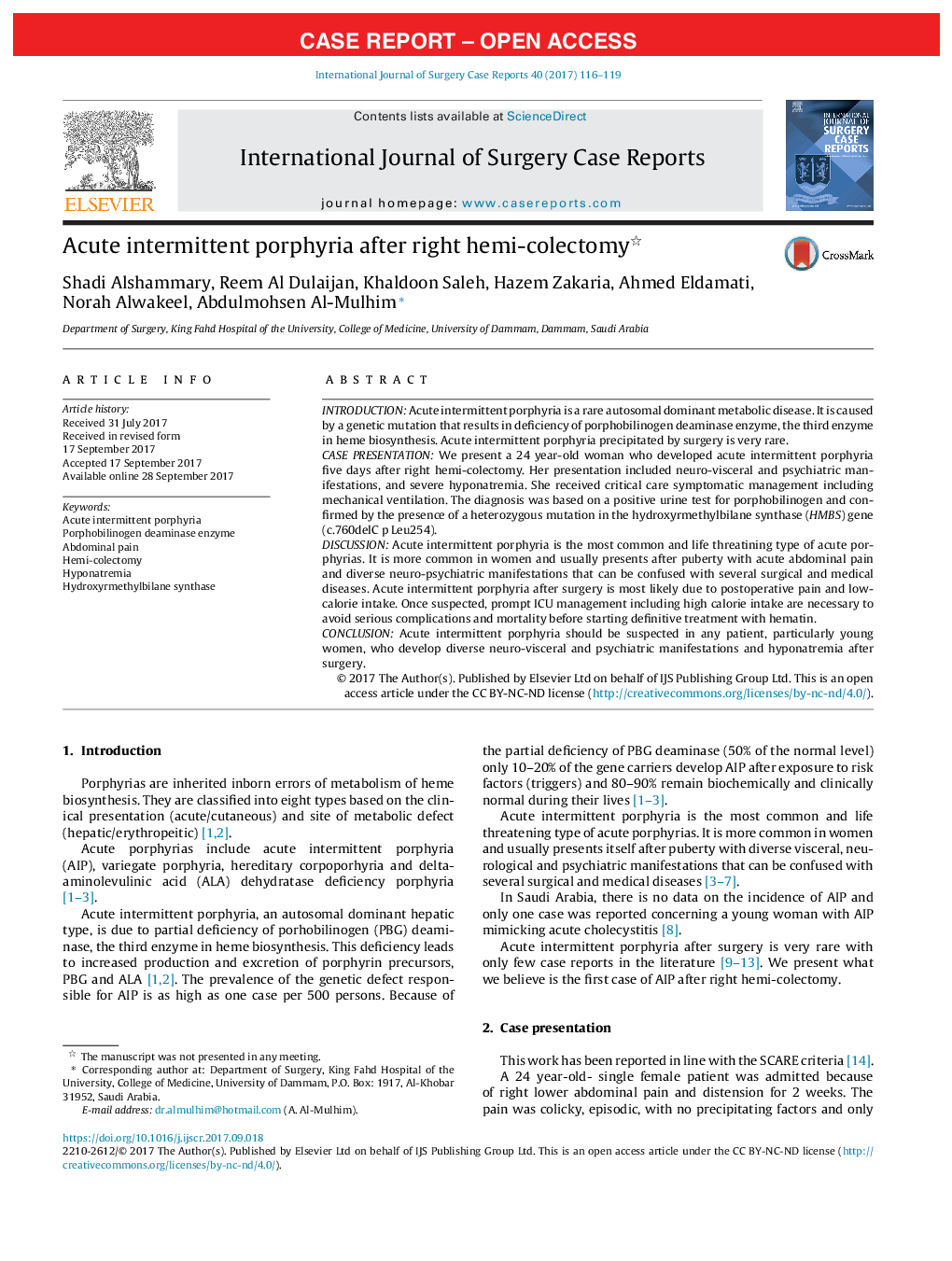| Article ID | Journal | Published Year | Pages | File Type |
|---|---|---|---|---|
| 5732650 | International Journal of Surgery Case Reports | 2017 | 4 Pages |
â¢Acute intermittent porphyria is rare.â¢High index of suspicion is needed to diagnose acute intermittent porphyria in a patient with abdominal pain, neuro-psychiatric manifestations and hyponatremia after surgery.â¢Once suspected, prompt intensive care management should include high calorie intake, symptomatic treatment of hyponatremia, use of safe medications and careful fluid-electrolyte monitoring in order to avoid serious complications and mortality.
IntroductionAcute intermittent porphyria is a rare autosomal dominant metabolic disease. It is caused by a genetic mutation that results in deficiency of porphobilinogen deaminase enzyme, the third enzyme in heme biosynthesis. Acute intermittent porphyria precipitated by surgery is very rare.Case presentationWe present a 24 year-old woman who developed acute intermittent porphyria five days after right hemi-colectomy. Her presentation included neuro-visceral and psychiatric manifestations, and severe hyponatremia. She received critical care symptomatic management including mechanical ventilation. The diagnosis was based on a positive urine test for porphobilinogen and confirmed by the presence of a heterozygous mutation in the hydroxyrmethylbilane synthase (HMBS) gene (c.760delC p Leu254).DiscussionAcute intermittent porphyria is the most common and life threatining type of acute porphyrias. It is more common in women and usually presents after puberty with acute abdominal pain and diverse neuro-psychiatric manifestations that can be confused with several surgical and medical diseases. Acute intermittent porphyria after surgery is most likely due to postoperative pain and low-calorie intake. Once suspected, prompt ICU management including high calorie intake are necessary to avoid serious complications and mortality before starting definitive treatment with hematin.ConclusionAcute intermittent porphyria should be suspected in any patient, particularly young women, who develop diverse neuro-visceral and psychiatric manifestations and hyponatremia after surgery.
